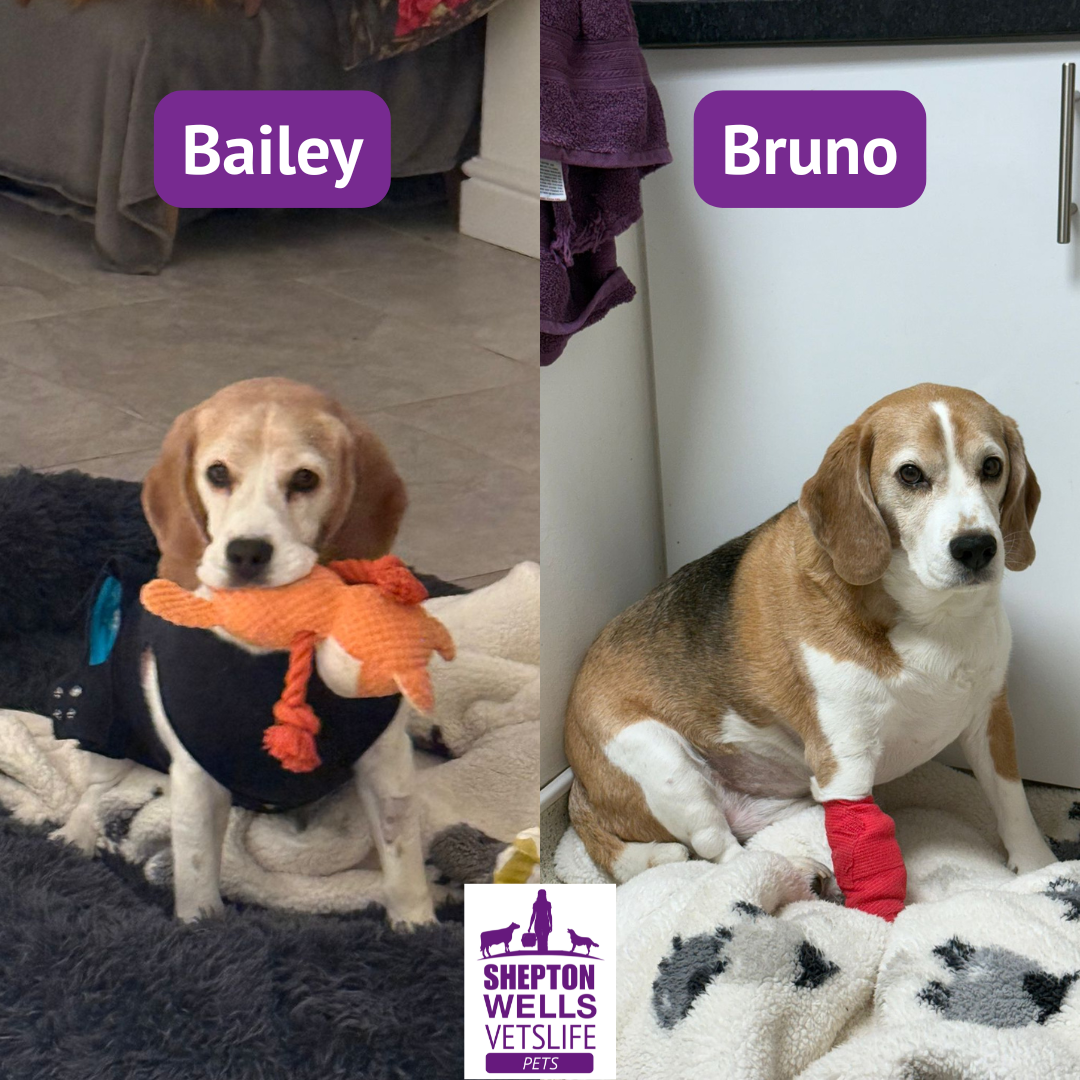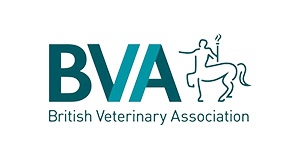A difficult few weeks for the Beagle Brothers, Bailey and Bruno
It is often worrying enough for owners when one of their pets has a hospital stay here at the practice, so when the Beagle brothers Bailey and Bruno had to stay in on successive weeks, for completely different problems, the owners must have thought themselves very unlucky indeed.
Bailey was the first to come in on a Saturday having been vomiting since before his breakfast that morning (being a beagle he did still eat it), and multiple times afterwards. He is the younger of the two brothers, although still over 7 years old. Thankfully, the owners had a good idea of what may have happened. Despite his middle age, he had been seen eating a sock on the Thursday and swallowed it before the owners could get to him. Bailey was admitted to firstly have a look for the sock that was likely causing an intestinal obstruction, and then to subsequently remove it. X-rays were taken initially which failed to show any abnormalities – often softer objects that dogs swallow don’t show up very well on x-rays and we look for their effects on the gut (gas build up etc.), rather than seeing the object itself. Following this, an ultrasound scanner was placed on the abdomen which did allow us to see an abnormal structure within the small intestines, causing a blockage. Had it been seen lodged within the stomach, we would have been able to retrieve it with an endoscope, a flexible tube with a camera on the end, but the only way to remove objects once they enter the small intestines is surgically.
Bailey was taken to surgery that afternoon and the obstruction was found. An incision into the gut allowed us to remove the offending item, which did turn out to be the sock seen 2 days before. The surgical sites were stitched closed, and Bailey was kept in Hospital for the following few days to allow his recovery. After such an operation the most likely time for complications is 3-5 days after the surgery, so once we reached the Thursday evening, everyone could relax a little.
A mere 2 days later his older brother Bruno then came in. He had been quite out of sorts and not wanting to eat, very unusual for his breed. He was found to have a considerable temperature – 41.3oC (normal for a dog is around 38-39oC) and a blood sample showed elevations in his liver parameters. He was started on some symptomatic treatment, including placing him on a drip and giving him anti-inflammatories and paracetamol to bring down his temperature, but the temperature persisted. Whilst infection is one of the most obvious causes for elevated temperatures in animals, there is a huge range of other conditions that can lead to a persistent fever. These are broadly categorised into auto-immune disorders, cancerous disorders, and miscellaneous (inflammation elsewhere, toxins, trauma etc…). The infectious causes can include bacteria, viruses and fungi; where bacteria are concerned, the type of antibiotic and length of antibiotic course varies greatly depending on location and type of bacteria. Given the liver value elevations on the bloods, the next logical step was to scan the liver and gall bladder to look for any abnormalities.
On repeat examination, Bruno seemed to have developed repeatable back pain. This could indicate an infected spinal disc. Xray’s were taken to assess the spine which appeared normal, thus making an infected disc much less likely. It was concluded that his apparent back pain was referred pain from his abdomen (referred pain being when you have an injury in one area of your body but feel pain somewhere else). Abdominal pain and spinal pain can sometimes be very difficult to tell apart.
We proceeded with his liver scan – there was an irregular liver border, and the liver did not appear as uniform as normal. Other changes to his gall bladder (which stores bile from the liver) were seen and needle samples were taken from the liver. These samples showed some fatty liver changes which were of minimal concern but also showed some degree of inflammation in the liver. Despite no infectious bacteria or other organisms being seen, Bruno was started on IV antibiotics for a presumed bacterial hepatitis. He ultimately responded well and was able to go home 3 days after being admitted but only seemed to be fully recovered another 5 days after that.
So, over the course of 2 weeks, both Bailey and Bruno had stays in the practice of 3 or more days. Both thankfully went home and have made great recoveries. Bruno’s antibiotic course was extended to 2 weeks given the type of infection he developed, which is most commonly caused by bacteria passing from the intestines, back up the bile duct into the gall bladder and liver.


Author –











